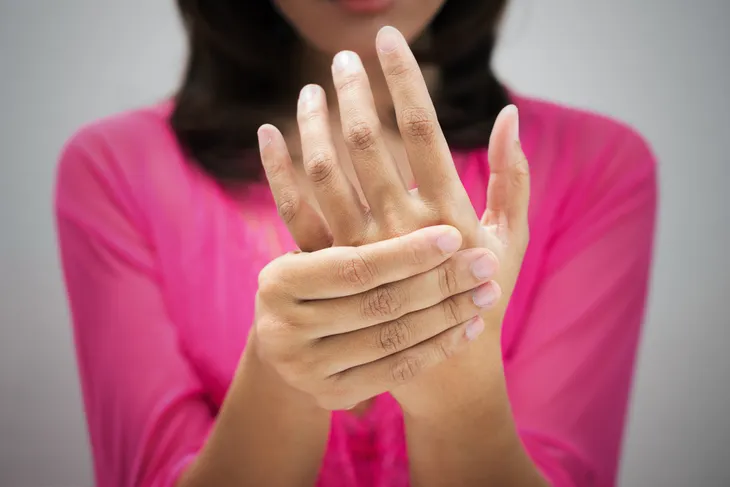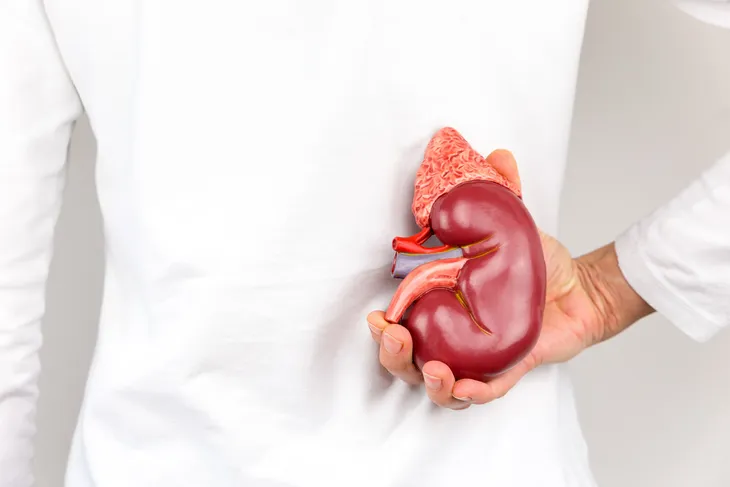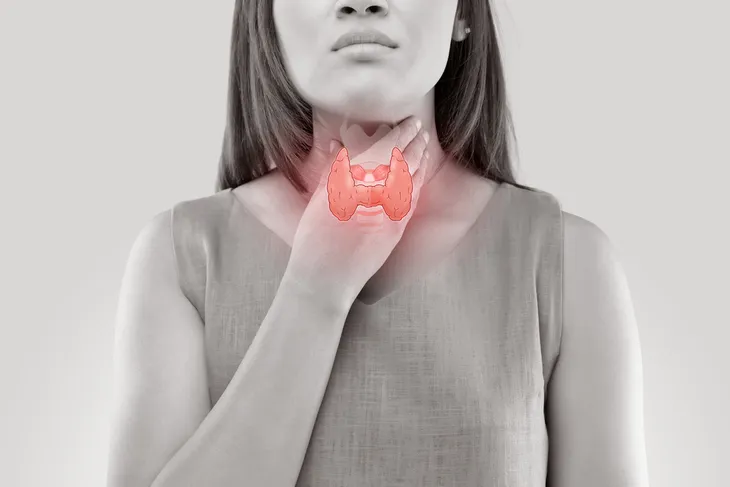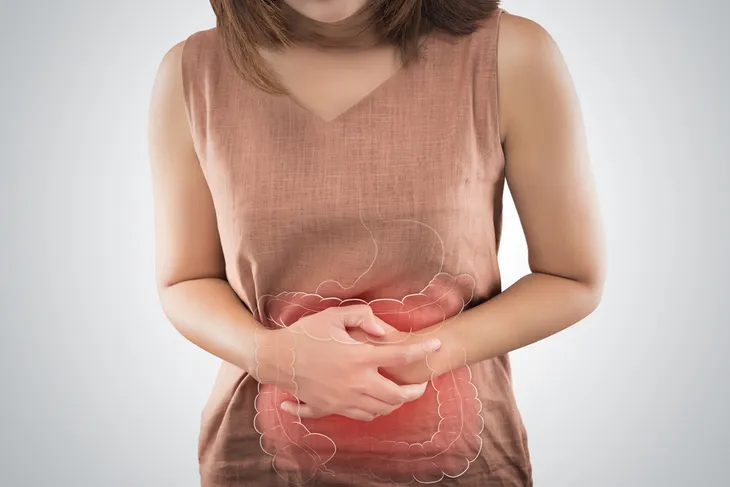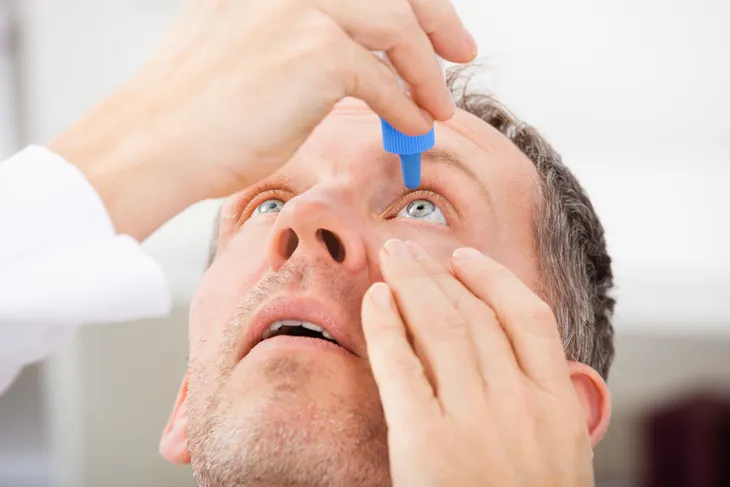Lupus is an autoimmune disease, which means the body attacks its own cells and organs—including the skin, joints, heart, lungs, blood, kidneys, and brain—because it can’t differentiate between foreign germs and viruses and healthy cells.
When the body’s immune system turns on itself, the inflammation, pain, and swelling that’s so familiar to lupus sufferers can become a permanent and painful part of everyday life.
However, with the proper diagnosis, treatment plan, and management, lupus sufferers can reduce symptoms and live more comfortably. Here are the 15 primary symptoms of lupus…
1. Skin Rash
Skin rashes are very common in individuals suffering from autoimmune diseases. In the case of lupus, a type of rash known as a malar rash, or a butterfly rash, typically forms on the ears, arms, chest, and face. These rashes are particularly common in the cheeks and across the nose and usually take the shape of a red, blotchy set of butterfly wings. The rash is not really itchy; it is just visually troublesome, and it can be exacerbated by prolonged exposure to heat and/or sunlight.
Because this rash has an autoimmune cause, it will not respond well to topical treatments or other frontline interventions. Your doctor may be unable to find a root cause of the rash upon initial investigation, prompting lupus to be considered later in the diagnostic process. In many cases, the rash is localized to a small area at first, then spreads out to other parts of the body.
2. Oral and Nasal Lesions
The large majority of lupus sufferers report the painful development of sores or lesions inside the mouth or nose. The mouth sores are very similar to canker sores, which can make eating, drinking, and speaking very painful. In the case of sores located within the nostrils, breathing may become restricted, and the patient may experience pain and tenderness when coming in contact with the lesions.
A related symptom can result from light exposure, or photosensitivity. Some people with lupus can develop lesions on their skin surfaces after prolonged periods in the sun, while others report that their skin problems seem to get worse after going outside on a sunny day. The link between lupus skin lesions and sunlight isn’t fully understood by doctors, but the bottom line is that if you start to experience these symptoms, you should visit your doctor for an explanation.
3. Joint Inflammation
One of the most common symptoms of lupus is pain and inflammation in the joints—particularly in the hands, legs, feet, ankles, hips, and knees. Joint inflammation is typically one of the first signs of lupus, and a normally energetic person may suddenly suffer from extreme joint pain and weakness. Of all the symptoms of lupus, this is the one that usually prompts people to visit their doctor to get a definitive diagnosis.
Joint pain and inflammation results from the body mistaking its own tissues for outside intruders. The immune system then attacks them, resulting in inflammation and pain. While this pain is usually relatively mild, it can become severe, particularly if the underlying cause is not diagnosed or treated. In this regard, lupus is similar to rheumatoid arthritis, which has a very similar mechanism of action. The good news is that medications can reduce the severity of these symptoms.
4. Photosensitivity
As mentioned, lupus patients may develop blisters as the result of sun exposure or have existing lesions and skin abnormalities flare up when they stay outside for prolonged periods of time on a sunny day. However, the photosensitivity associated with lupus and other autoimmune disorders can present itself in a variety of other ways.
Normally, sunlight makes people happy and boosts their enjoyment of the outdoors. However, people with lupus may experience headaches or other intolerances to bright light and sunshine, and these symptoms may seem to come on abruptly, with little prior notice. In other words, they can affect people who otherwise lead normal, active, and healthy lives, and people who have no history of photosensitivity or problems associated with sunlight exposure. If you experience these symptoms, you should have your doctor check them out to find out why they are occurring.
5. Fever and Headache
The more subtle symptoms of lupus can be very troubling because they linger for longer periods of time and are more generalized. For instance, lupus sufferers regularly report feeling feverish and suffering from migraine headaches on an ongoing basis, but doctors fail to accurately identify the root cause, instead treating the symptoms in a manner that only provides temporary relief.
These symptoms are particularly problematic because they are so non-specific in nature. Fevers are associated with a wide range of medical conditions and non-serious illnesses, including the common cold and flu. Headaches are routinely dismissed as part of day to day life, and most people don’t consider them serious, even if they linger for days or weeks on end. The bottom line is that you should have any ongoing symptoms medically investigated, even if they don’t seem particularly serious at the time.
6. Chest Pain
In severe cases, the pain and inflammation associated with lupus can become so pronounced and so serious that it can actually spread into major organs, such as the lungs. For example, chest pain can occur if the lungs become inflamed as the result of disrupted immune system function. The lungs will literally swell up, press against the rib cage, and cause an ongoing ache. If left untreated, this condition can leave the patient at risk of developing pneumonia, which can itself pose significant health risks.
Other symptoms of pneumonia include a productive cough, high fever, chills, and shortness of breath, which may occur only without significant physical exertion. Your doctor may suspect lupus if you develop pneumonia after complaining of lingering chest pain that grew increasingly intense over a period of time, especially if you present with other symptoms of an autoimmune disorder.
7. Hair Loss
Like many other autoimmune diseases and disorders, lupus can actually affect the normal development of body cell growth. One of the most visible ways in which this symptom presents itself is through abnormalities in hair growth. Specifically, patients with lupus and patients taking certain drugs for lupus may experience inhibited hair growth or full-scale loss of hair. This can occur in both male and female patients.
Hair loss symptoms occur as the result of disruptions in the body’s ability to support the normal growth cycle, and it is related to the disease’s overall tendency for the body to mistake its own tissues for outside intruders. Fortunately, if hair loss occurs as the result of drug treatments for lupus, you may be able to relieve them by switching to different medications or discontinuing the problem drug altogether. However, you should only do this on the advice of your doctor.
8. Blue Fingers
One of the more troubling symptoms of lupus is known as Raynaud’s phenomenon. This condition is caused by the occasional restriction of blood flow to the fingers, which in turn can cause the fingers to go numb and turn blue, since they aren’t receiving enough oxygenated blood. Then, a sudden rush of blood flows into the extremities, causing them to go flush. During this phase, fingers may also become hot, and they usually tingle and throb.
Patients can take solace in the fact that this condition does not generally pose a major threat to their ongoing health. It is visually disconcerting and the physical symptoms can be invasive and irritating, but your extremities aren’t at increased risk of suffering permanent damage unless you do not seek treatment for the underlying condition. Report any such symptoms to your doctor immediately; treatment can help bring them under control.
9. Fatigue
Lupus patients frequently report a draining feeling of fatigue and exhaustion, even if the disease has been diagnosed and is being treated. Doctors blame this on a wide range of factors; medical studies have shown that lupus interferes with energy levels in numerous ways. Ongoing symptoms can disrupt normal sleep patterns, leaving patients chronically under-rested and feeling tired throughout the day. Exhaustion and fatigue may also result from the use of certain drugs used to manage pain and other symptoms.
Unfortunately, lupus requires ongoing treatment and many patients experience a permanent decline in quality of life. This can lead to depression which, in turn, can trigger depleted energy levels and a general loss of interest in activities the patient once enjoyed. If you experience these symptoms, be sure to report them to your doctor and management team. There are other interventions available that can help restore energy levels and balance your mood.
10. Kidney Problems
In addition to affecting the lungs, heart, and brain, lupus can also afflict the kidneys, causing inflammation and dysfunction that make waste elimination difficult. In fact, if toxins remain in the body and aren’t eliminated efficiently via urination, lupus patients can develop a wide range of urinary tract disturbances, including uncomfortable urination, urgent urination, and discoloration of the urine. It may also give off an unusual or foul odor, as built-up toxins interfere with its normal composition.
In extreme examples, patients may find traces of blood in their urine or experience swelling in their feet and ankles as the body struggles to process and eliminate toxins. However, you should note that urinary abnormalities are considered to be a relatively uncommon symptom of lupus. If you experience this symptom in isolation, it is most likely caused by something else, such as underlying kidney or liver problems, a urinary tract infection, or a sexually transmitted infection.
11. Thyroid Problems and Weight Changes
In many cases, lupus and thyroid problems go hand in hand. And because one of the thyroid’s key functions is to control the body’s metabolism, when it isn’t functioning properly, weight gain or weight loss can occur.
With weight loss, it may sometimes be hard to notice it as it can happen gradually. In some cases, however, it may happen very quickly (i.e., losing 20 pounds in two months). Weight gain, on the other hand, tends to occur slowly, even though there have been no dietary changes to cause it, and may be due to swelling in the feet or legs.
12. Gastrointestinal Problems
For some people with lupus, their symptoms may present themselves as gastrointestinal problems, such as acid reflux and heartburn. Fortunately, these symptoms can often be alleviated by taking antacids, reducing meal sizes, and avoiding caffeinated drinks.
As lupus is an autoimmune disease, however, it can also cause or worsen other digestive conditions such as ulcerative colitis and pancreatitis. This can cause the person to experience persistent abdominal pain, nausea, and, in some cases, vomiting.
13. Dry Mouth and Dry Eyes
Have you suddenly found your mouth to be more parched than usual, and your eyes feel dry and puffy? These are yet more common symptoms of lupus. Or, more specifically, they’re symptoms of another autoimmune disease that people with lupus often get.
It’s called Sjogren’s disease. It leads to dry mouth and dry eyes, because it “causes the glands responsible for tears and saliva to malfunction and lymphocytes can accumulate in the glands,” says Healthline. The source adds that women with lupus may find that this condition also causes vaginal dryness and dry skin.
14. Confusion, Seizures, and Psychosis
As mentioned earlier, lupus can affect cells throughout the entire body, including those in the brain. In addition to the headaches already discussed, these brain-related symptoms can include dizziness, confusion, and memory loss.
Even more seriously, symptoms can include seizures and psychosis, which Lupus Canada says occur in approximately 25-percent of people with the disease. To help identify and distinguish these symptoms, the source says that seizures “involve loss of consciousness and involuntary body movements,” whereas psychosis “is a serious mental condition where thinking and behavior are disturbed, often including hallucinations…and delusions….”
15. Anemia
Although people can develop anemia on its own, it very commonly occurs alongside lupus. In fact, KaleidoscopeFightingLupus.org says, “[…] Nearly half of those living with lupus are anemic.”
But what exactly is anemia? It’s a medical condition where there is a lack of healthy red blood cells in the blood, which are responsible for carrying oxygen throughout your body. As a result, people with anemia will experience symptoms such as headaches, weakness, fast heartbeat, and shortness of breath. Anemia tends to occur with lupus, because the body attacks and destroys its healthy red blood cells by mistake, an unfortunate result of autoimmune disease.



